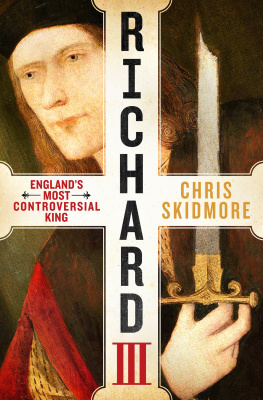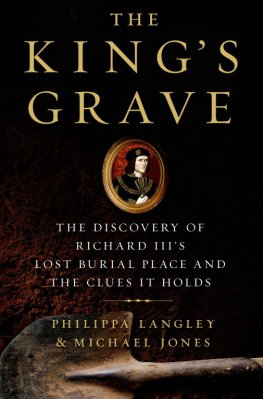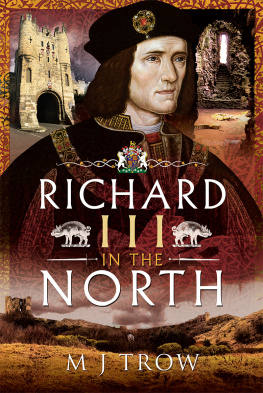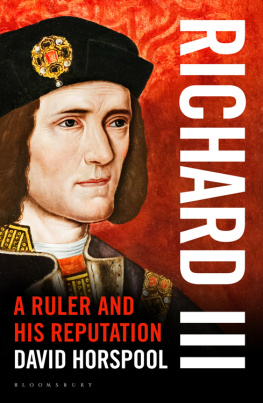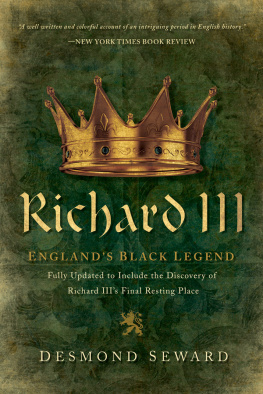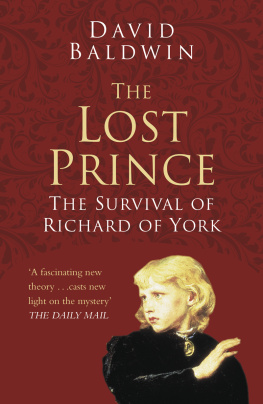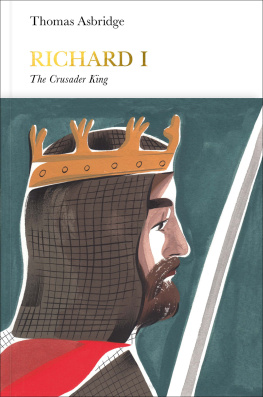Contents
Guide
RICHARD III
ENGLANDS MOST
CONTROVERSIAL KING

CHRIS SKIDMORE

The author and publisher have provided this e-book to you for your personal use only. You may not make this e-book publicly available in any way. Copyright infringement is against the law. If you believe the copy of this e-book you are reading infringes on the authors copyright, please notify the publisher at: http://us.macmillanusa.com/piracy.
To Lydia
1. Portrait of Richard III, English school, oil on panel, c.151040. Society of Antiquaries of London / Bridgeman Images.
2. Page noting the birth of Richard III, from The Book of Hours of Richard III, English school, ink on vellum, 15th century. Lambeth Palace Library / Bridgeman Images.
3. Church of St Mary and All Saints, Fotheringhay, Northamptonshire. Photo NRT-Helena / Alamy.
4. Middleham Castle, Yorkshire. Photo English Heritage / Heritage Images / Getty Images.
5. Letter from Richard, duke of Gloucester, to Sir John Say, 1469. British Library Cotton Vespasian MS F III fo. 19. British Library Board / Bridgeman Images.
6. Portrait of Edward IV, English school, oil on panel, c.151040. Society of Antiquaries of London / Bridgeman Images.
7. Portrait of George, duke of Clarence. Paul Fearn / Alamy.
8. Edward IV on Fortunes wheel from The Life of Edward IV, English school, ink on vellum, 1460c.1470. British Library Harley 7353. British Library Board / Bridgeman Images.
9. Portrait of Elizabeth Woodville, Queen of Edward IV, English school, oil on panel, c.1500. Ashmolean Museum, University of Oxford / Bridgeman Images.
10. Anthony Woodville and William Caxton presenting the first printed book in English to Edward IV. Lambeth Palace Library, London. Bridgeman Images.
11. Battle of Barnet, English school, 15th century. Centrale Bibliotheek van de Universiteit, Ghent. Bridgeman Images.
12. Battle of Tewkesbury in Nouvelles du Recouvrement par Edouard IV de son Royaume dAngleterre, French school, 15th century. Bibliothque municipale de Besanon MS 1168, fo. 4v. Courtesy of the Ville de Besanon Bibliothque et archives municipales
13. The descent of the Neville family in the Beauchamp Pageants, Netherlandish school, ink on vellum, c. 1483. British Library Cotton Julius E. IV, fo. 28v. British Library Board / Bridgeman Images.
14. Richard of Shrewsbury, duke of York, and Edward, Prince of Wales. Royal Window, Northwest Transept, Canterbury Cathedral. Photo Granger / Alamy.
15. The White Tower. Photo Erhan Elaldi / Anadolu Agency / Getty Images.
16. The signatures of Richard, duke of Gloucester and Edward V, May 1483. British Library Cotton Vespasian MS F XIII fo. 123. British Library Board / Bridgeman Images.
17. Garter stall-plate of Lord Hastings from The Stall Plates of the Knights of the Order of the Garter, 134885 by W. H. St John Hope (Archibald Constable, 1901). Private Collection. Look and Learn / Bridgeman Images.
18. Letter from Richard III to John Russell, 29 July 1483. TNA C81/1392/1. Courtesy of The National Archives, Kew, Surrey.
19. Detail from the Rous Roll, c.14834. British Library Board / Bridgeman Images.
20. Warwick Castle. Photo Ellen Rooney / Design Pics / Bridgeman Images.
21. Illuminated initial of the charter granted by Richard III to the Company of the Wax Chandlers of London in 1484. Geoffrey Wheeler.
22. Brass rubbing of William Catesby. Geoffrey Wheeler.
23. Stained-glass window depicting Lord Howard, 1st duke of Norfolk. Geoffrey Wheeler.
24. Letter from Richard III to John Russell, 12 October 1483. TNA C81/1392/6. Courtesy of The National Archives, Kew, Surrey.
25. Henry Tudor, 16th-century French drawing. Bibliothque Municipale, Arras. Bridgeman Images.
26. Elizabeth of York, English school, oil on canvas, late 16th century. National Portrait Gallery, London.
27. Richard IIIs letter to Henry Vernon, 11 August 1485. Belvoir Mss vol. 1, fo. 20. Reproduced with kind permission of His Grace the Duke of Rutland.
28. Silver gilt boar badge discovered at the site of the battle of Bosworth. Image courtesy of Leicestershire County Council.
29. Cannon balls discovered at the battle site. Image courtesy of Leicestershire County Council.
30. Gold badge of an eagle with a snake. Image courtesy of Leicestershire County Council.
31. Tomb of Sir John Cheyne in Salisbury Cathedral. Geoffrey Wheeler.
32. Tomb of Thomas, Lord Stanley, in the Church of St Peter and St Paul, Ormskirk, Lancashire. Paula Martin.
33. The positions and movements of the forces at the battle of Bosworth. Map by John Gilkes, following an interpretation by Peter Foss.
34. The remains of Richard III in Leicester City Council Social Services car park. University of Leicester / Rex Features.
35. The bones of Richard III. University of Leicester.
36. The skull of Richard III. University of Leicester.
37. Portrait of Richard III, English school, oil on panel, 150420. Royal Collection Trust Her Majesty Queen Elizabeth II 2017.
38. Portrait of Richard III, English school, oil on panel, 16th century. Society of Antiquaries of London / Bridgeman Images.
ENGLAND, FRANCE AND BRITTANY DURING THE WARS OF THE ROSES
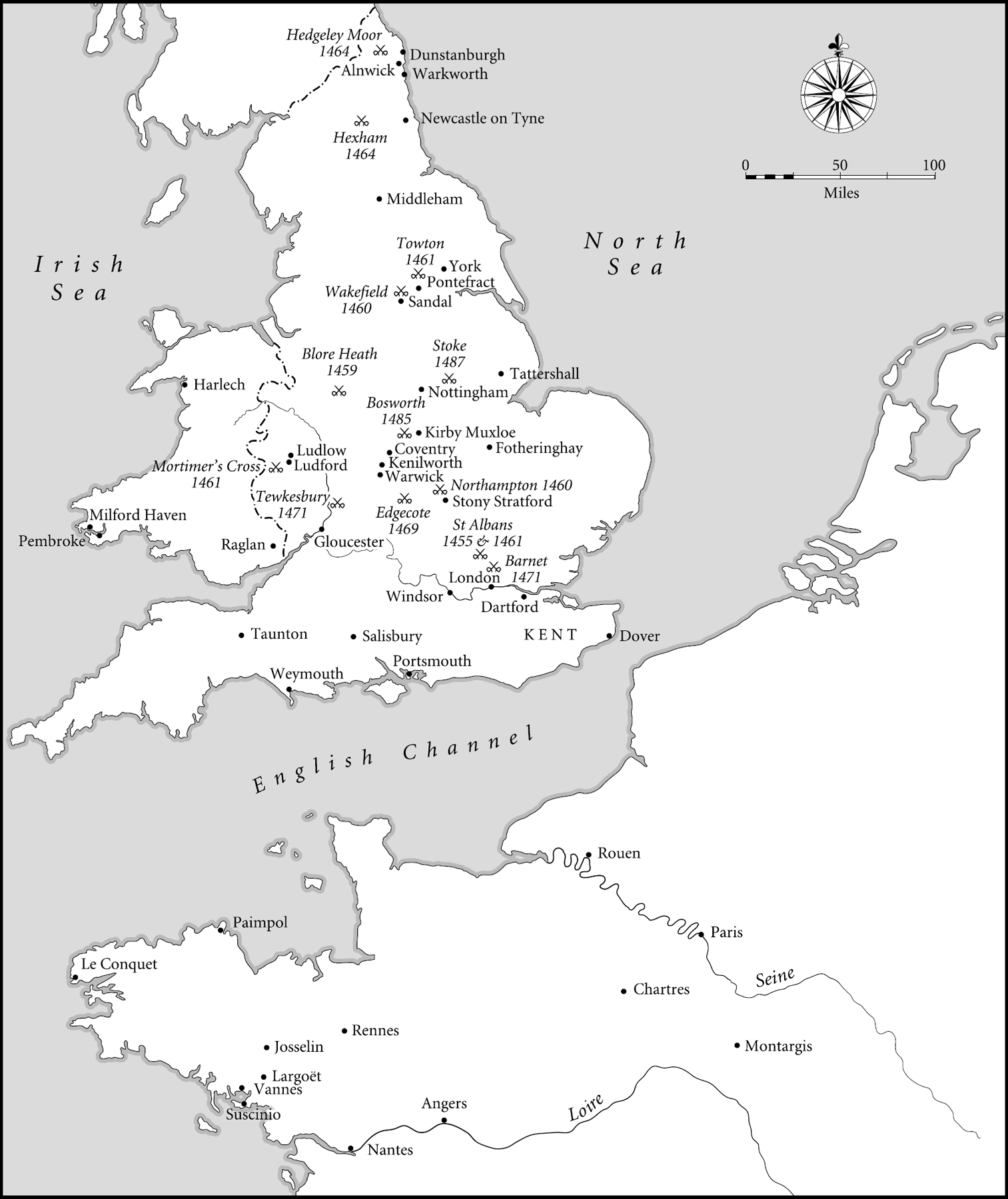
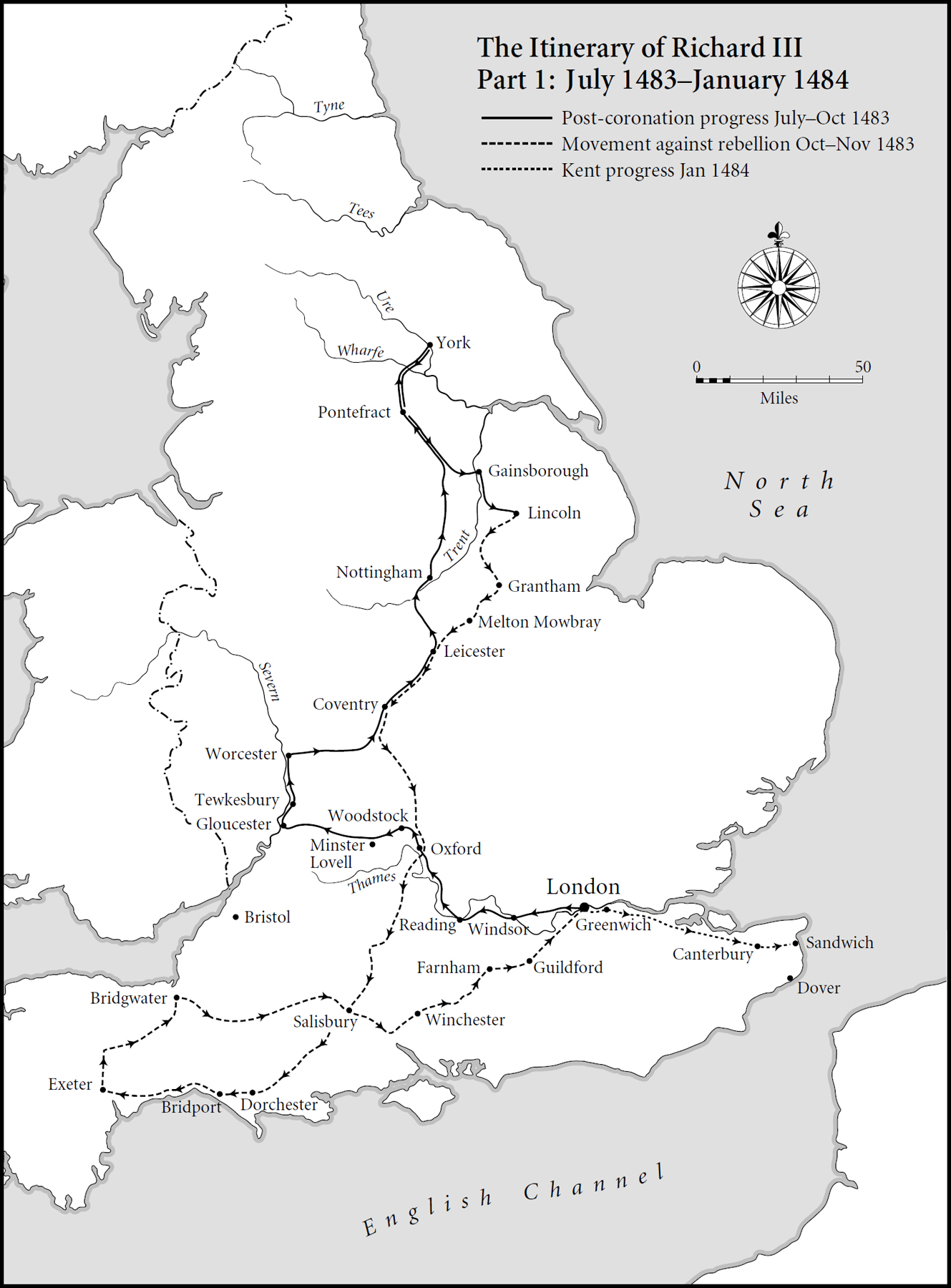
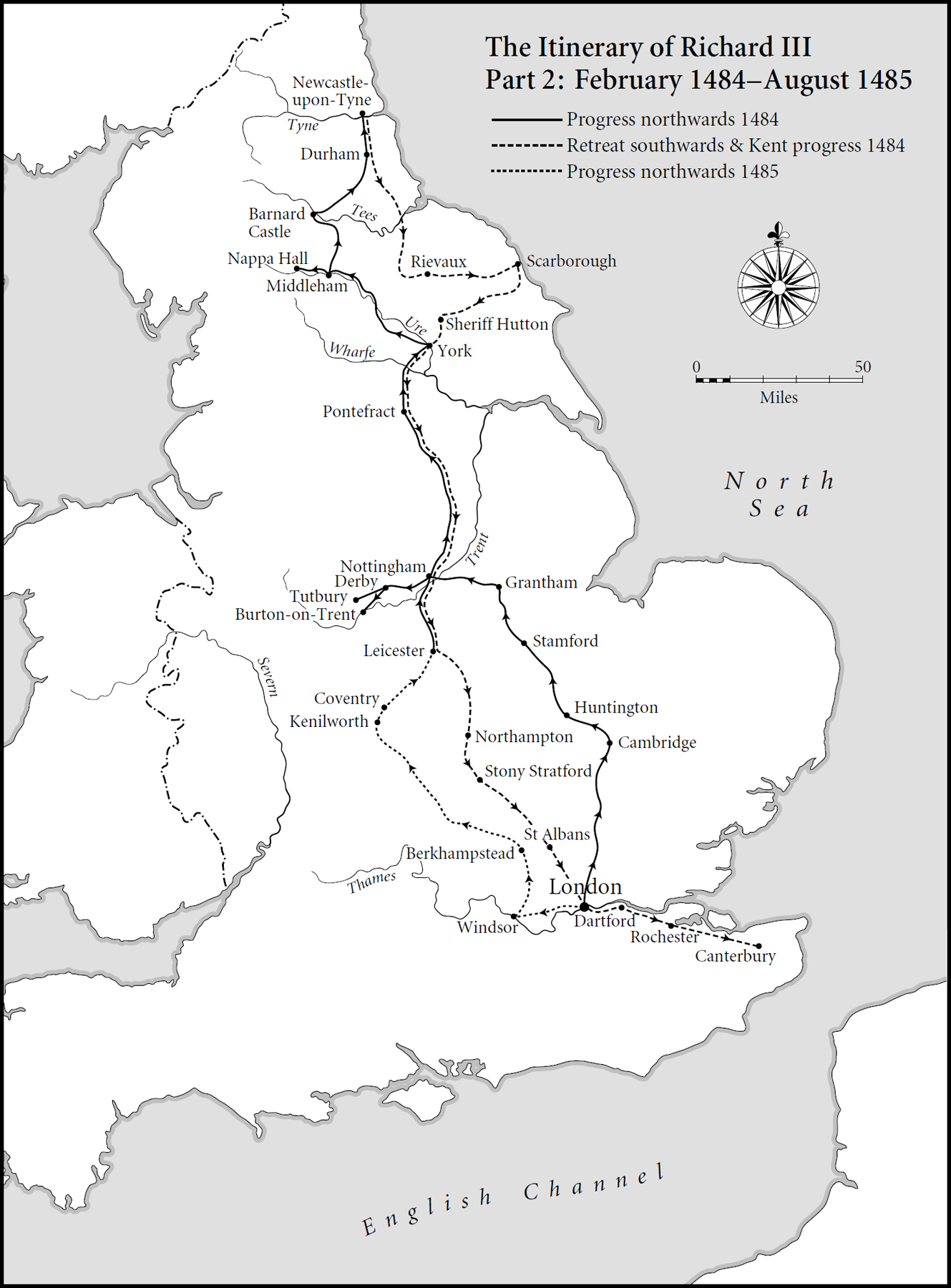
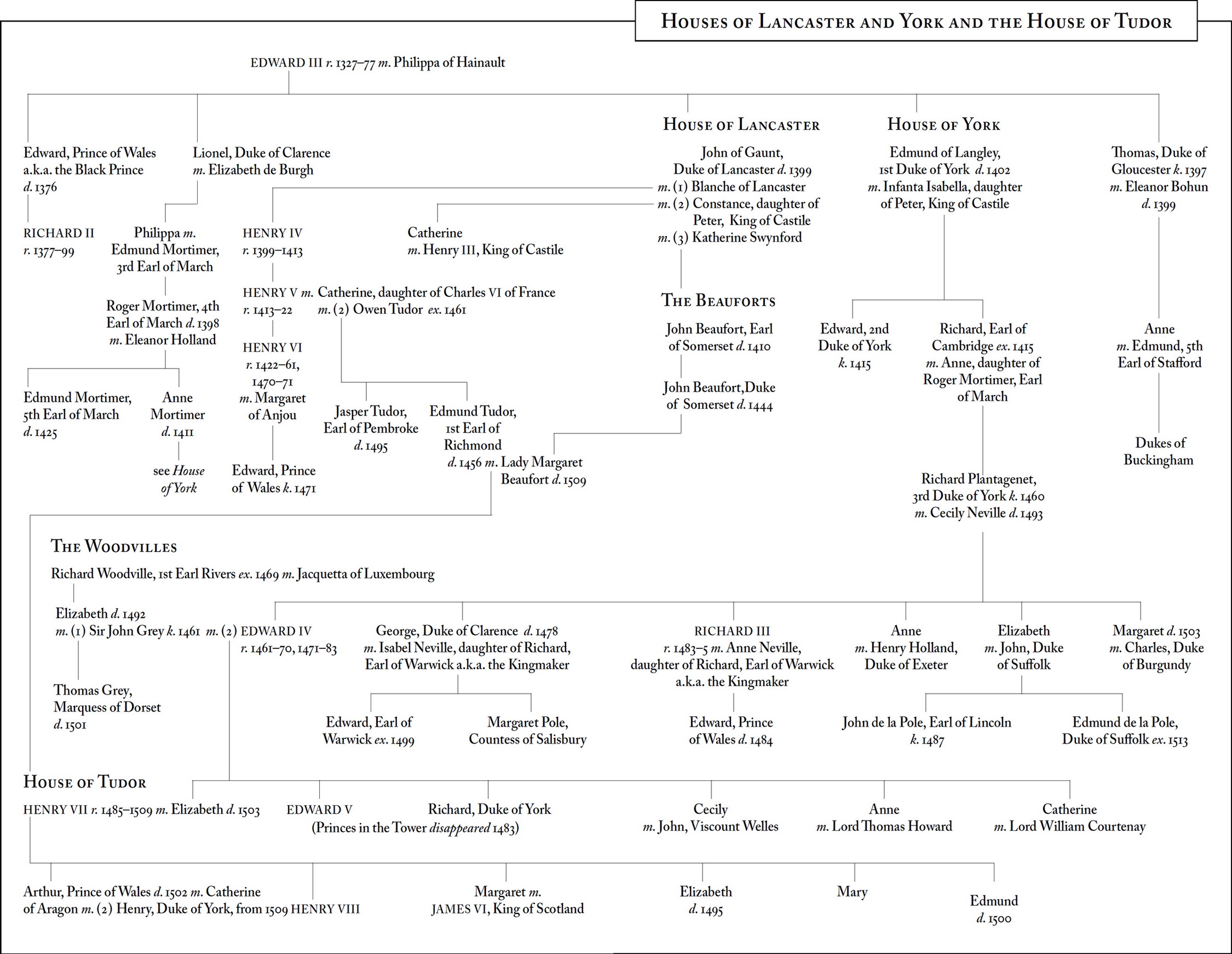
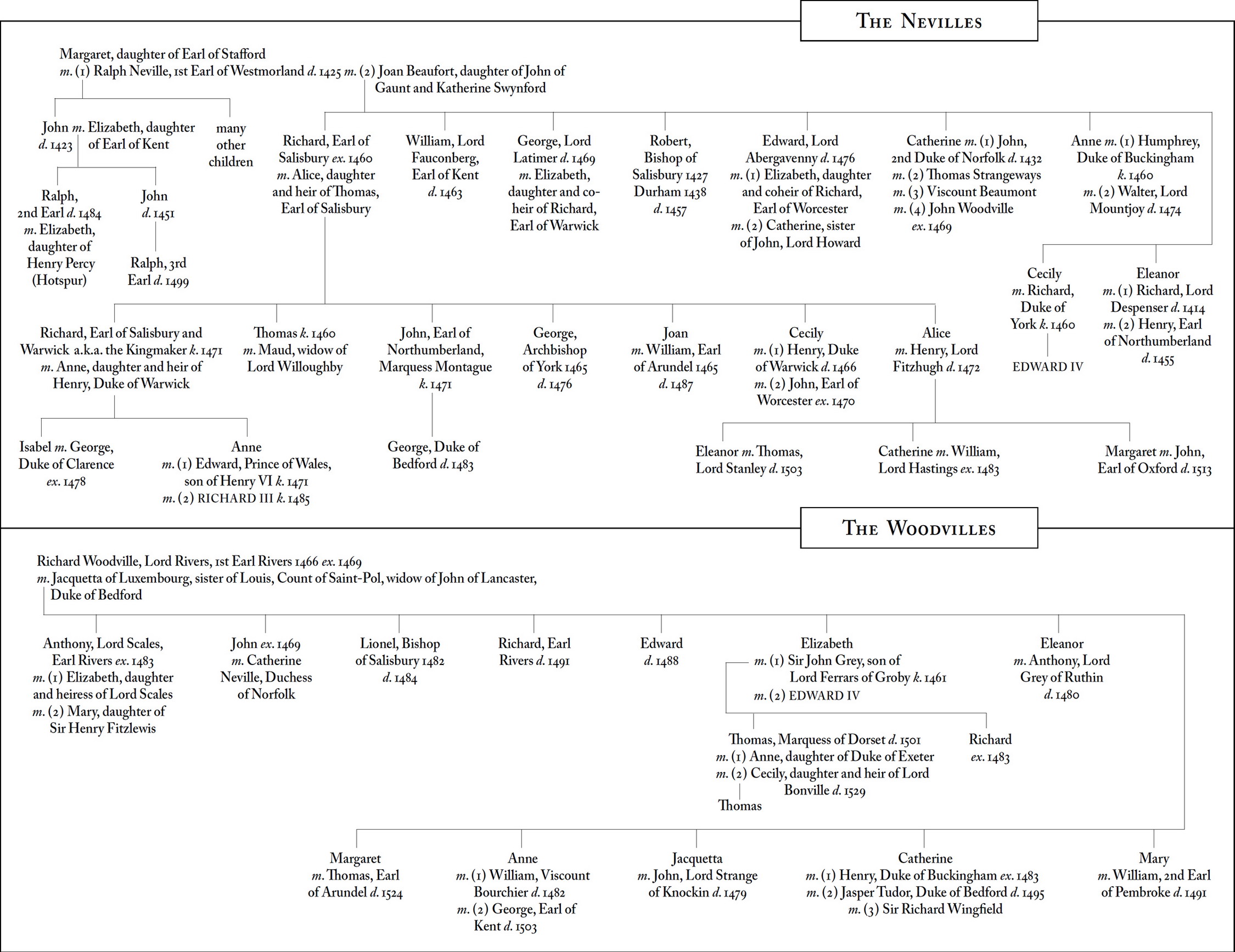
English monetary values are recorded in pounds (l), shillings (s) and pence (d), with twenty shillings in the pound and twelve pence in the shilling. The mark was a unit of account, with one mark being worth thirteen shillings and four pence, therefore two-thirds of a pound. There are many pitfalls to estimating the value of currently across the centuries; however, a useful guide is the National Archives Currency Converter (see www.nationalarchives.gov.uk/currency) that suggests one pound in 1480 would have been worth an equivalent of 504.59 at 2005 prices, with one shilling worth an equivalent of 25.23 and one penny equalling 2.10. The standard unit of French money was the livre tournois, divided into twenty sols (later sous), each worth twelve denier. One ecu was worth the equivalent of six livres tournois. The value of the livre tournois to the pound fluctuated, but it is generally estimated that there were ten livres tournois in the pound, with one shilling being worth two livres tournois.
Dates are given according to contemporary sources that followed the Julian calendar in use at the time. With the adoption of the Gregorian Calendar in 1752, account should be taken of the fact that these dates do not match with the exact dates of our current calendar. The difference between the two calendars in the fifteenth century is nine days, so the battle of Bosworth, while fought on 22 August in 1485, would have actually been 31 August in our contemporary calendar.

